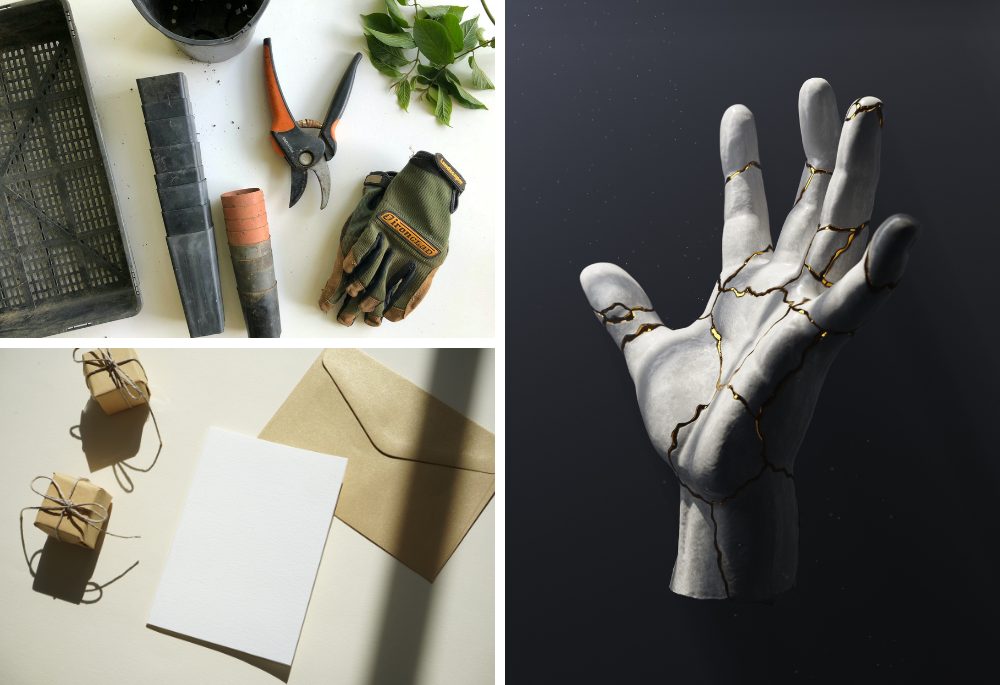
(Unsplash/Clockwise, from top left: Eco Warrior Princess; Simon Lee; Mediamodifier)
One year ends, and another one begins. Time for New Year's resolutions. Can we even remember what last year's good intentions were? Maybe yes, and we are delighted. Maybe no, and those intentions are consigned to a museum, so to speak.
Think of a faded brick structure built by a no-name architect. Not many stop to visit, although the exhibit is free. A board member suggests that a "Museum of Bad Intentions" might draw larger crowds. The rest of the board is quick to remind him that there is a proliferation of such museums all over the globe. No, better to focus on good intentions even if many seem destined for the museum. At least it may start people thinking, and isn't that their goal?
And so, the exhibits are carefully cataloged, mounted and labeled, filling every gallery. The museum has a substantial archive, with new accessions arriving daily. It seems that the number of good intentions is legion.
The first exhibit shows a rustic frame around three empty packets of beans and the following notation:
It was the gardener's intent to plant enough beans for those who came to the soup kitchen. And so, she emptied these packets into the earth — Italian, green stringless and golden yellow — all in congested rows with little growing space between. Her heart was big, but her garden, small. The plot got daily watering, plenty of sun. In six weeks, a few plants produced a disappointing harvest of good intentions.
Next to this exhibit, there are two blank notecards intended for two elderly women in a nursing home. One of the women died before the note was written. The other slipped into Alzheimer's. Their names appear on a small plaque below the empty cards, a late remembrance.
In the center of the room stands a 6-foot sculpture of a single hand done in terra cotta. From the wrist up, the hand is remarkable for its open detail of fingers pointing heavenward. The tag notes that it is the gift of a hand therapist. It represents all the people she helped and all the people she intends to. And she will.
The next room features manikins in various poses wearing various outfits — dinner dresses, business suits, sportswear, winter coats with fur collars, and colorful daily outfits for the woman who wore them. Two weeks after her funeral, her daughter hung the clothes in a spare closet in her own home. Her mother was a short person, and the daughter intended to give the clothes to another short person. She never got to it. Now short manikins wear the clothes in a colorful museum display.
Advertisement
There is a whole room devoted to masks representing every nation, tribe and tongue. The faces are blank and colorless, with eyes wide open and mouths about to speak. But no words emit, not now, not ever. No words to comfort, compliment, encourage, congratulate. The silence in the room of masks is heavy with good intentions.
Upon leaving the museum, the visitors pick up a brochure with pictures and descriptions of all the exhibits. These are followed by a curious statement, meant for you, the reader, as well:
You have considered an exhibit of good intentions and, perhaps, reviewed your own. The members of the board hope that you put them out of business, that you help close down the museum. To this end, when a sudden lightbulb goes on in your mind, ask yourself, "Do I want this good intention to end up in a museum?"
The room of silence opens out into a cold, sunny winter day, 2024. You pull your hood down and your scarf up. You have visited a museum and listened to other people's stories. Now it’s time to consider your own.
Good intentions scroll across your mind, first one, then another, and another. Like blooms in winter, the good intentions say, "Pick one and do it today." And you do.
Then again, tomorrow.
And tomorrow.
Soon there is no more museum. Just a handful of love.





